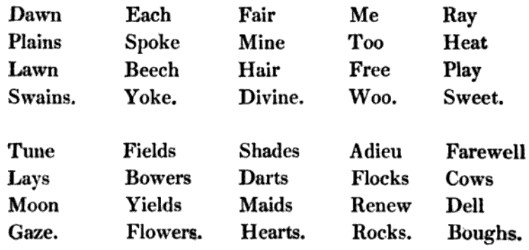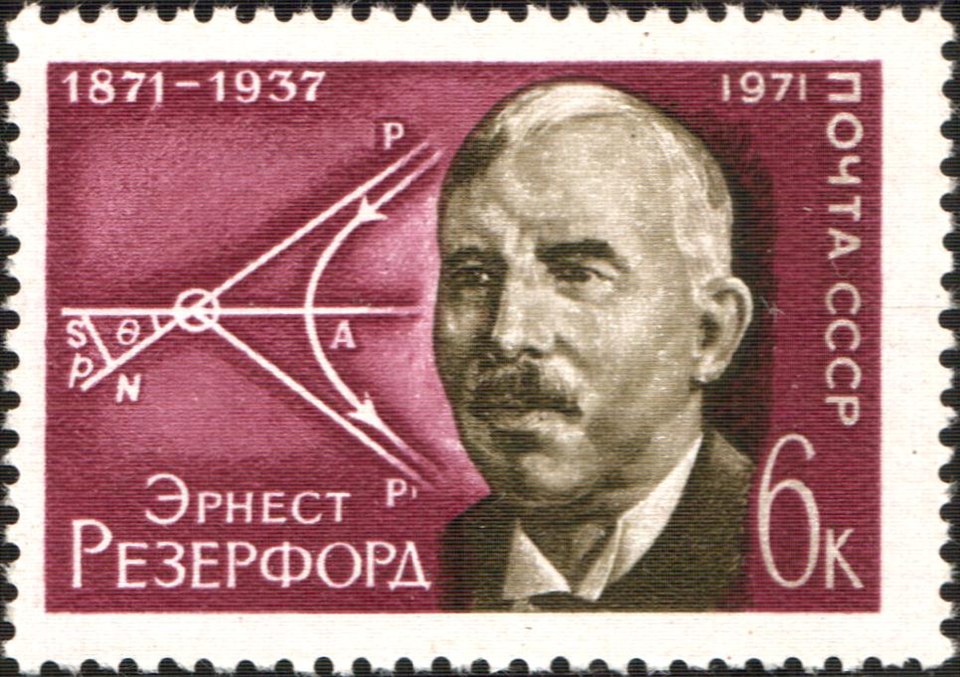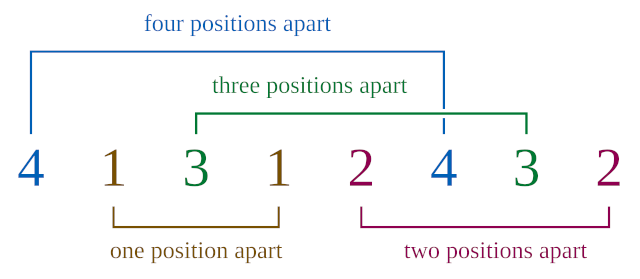“Life is the art of drawing sufficient conclusions from insufficient premises.” — Samuel Butler
Inventory
Titles of paintings by Salvador Dalí:
- Debris of an Automobile Giving Birth to a Blind Horse Biting a Telephone
- Bed and Two Bedside Tables Ferociously Attacking a Cello
- Premature Ossification of a Railroad Station
- Rock and Infuriated Horse Sleeping Under the Sea
- Fifty Abstract Paintings Which as Seen From Two Yards Change Into Three Lenins Masquerading as Chinese and as Seen From Six Yards Appear as the Head of a Royal Bengal Tiger
- Necrophiliac Fountain Flowing From a Grand Piano
- Dalí at the Age of Six When He Thought He Was a Girl Lifting the Skin of the Water to See the Dog Sleeping in the Shade of the Sea
- Skull With Its Lyric Appendage Leaning on a Bedside Table Which Should Have the Exact Temperature of a Cardinal’s Nest
- Bread on the Head of the Prodigal Son
- Barber Saddened by the Persistence of Good Weather (The Anguished Barber)
- The Man With the Head of Blue Hortensias
- A Soft Watch Put in the Appropriate Place to Cause a Young Ephebe to Die and Be Resuscitated by Excess of Satisfaction
- Two Pieces of Bread Expressing the Sentiment of Love
- Mysterious Mouth Appearing in the Back of My Nurse
- Dream Caused by the Flight of a Bee Around a Pomegranate a Second Before Awakening
- Invisible Afghan With the Apparition on the Beach of the Face of Garcia Lorca in the Form of a Fruit Dish With Three Figs
- Giant Flying Mocca Cup With an Inexplicable Five Metre Appendage
- Dalí’s Hand Drawing Back the Golden Fleece in the Form of a Cloud to Show Gala, Completely Nude, the Dawn, Very, Very Far Away Behind the Sun
- Atmospheric Skull Sodomizing a Grand Piano
- My Wife, Nude, Contemplating Her Own Flesh Becoming Stairs, Three Vertebrae of a Column, Sky and Architecture
He wrote, “It is not necessary for the public to know whether I am joking or whether I am serious, just as it is not necessary for me to know it myself.”
Product Packaging
In 1897, German mathematician August Leopold Crelle published a book listing all the products of pairs of 3-digit numbers. He offered it as a useful aid in the multiplication of large numbers. Suppose we want to multiply 26457081 by 247183. Divide each factor into 3-digit “chunks”: 026 457 081 and 247 183. Now think of each full chunk as a digit — instead of falling in the range 0-9, here each falls in the range 000-999; in effect we’re expressing each factor in base 103. With that understanding we can proceed with the arithmetic in the usual fashion. The first few partial products are 183 × 081 = 14823, 183 × 457 = 83631, and 183 × 026 = 4758; indent these successively by three places, as shown below, and continue with the rest, following the same pattern:
26457081
x 247183
20007
112879 14823
6422 83631
4758
6539740652823
The user can look up all the intermediate products in Crelle’s book, so all that remains is to do the final sums. Crelle gives some further examples in the book.
In 1989, Northwestern University mathematician R.P. Boas pointed out that the same method can be used to work through ungainly problems such as 2849365028828173 × 4183920538293052 = 11921516865208167208145227753996 even on a simple 8-digit calculator, the prevailing tool at the time. Cutting these factors into 4-digit chunks reduces all the intermediate products and sums to manageable size, and the 32-digit result is reached reliably even though it would normally be beyond the calculator’s capacity.
(R.P. Boas, “Multiplying Long Numbers,” Mathematics Magazine 62:3 [June 1989], 173-174.)
Procedure
The September 1981 University Computing Center Newsletter at the University of Southern California included this recipe for “Famous Rum Cake,” written in Assembler by a systems programmer for the IBM 360:
RUMCAKE CSECT
* THIS INTRODUCES SOME NEW MNEMONICS
* MX MIX
* MXL MIX UNTIL LIGHT
* BSOP BEAT UNTIL SOFT PEAKS
* BSTP BEAT UNTIL STIFF PEAKS
* BKE BAKE (SECOND OPERAND IS NUMBER OF MINUTES)
PREHEAT BALR 12,0 350 DEGREES
USING *,12
BOWL1 L 3,FLOUR
A 3,BAKPOW
A 3,SALT
A 3,BSODA
BOWL2 L 4,BUTTER
MXL 4
A 4,SUGAR1
MX 4
A 4,ORIND
AR 4,3
A 4,MIXTURE
MX 4
A 4,EXTRACTS
BOWL3 L 5,WHITES
BSOP 5
A 5,SUGAR2
BSTP 5
AR 5,4
S 5,PANS
BKE PANS,=M'25'
SVC 3
*
* TYPES OF CONSTANTS ARE ALSO INTRODUCED:
* T TEASPOON
B TABLESPOON
C CUP
*
* NON-INTEGER LENGTHS ARE ALSO INTRODUCED
*
FLOUR DS CL2
BAKPOW DS TL2 BAKING POWDER
SALT DS TL.25
BSODA DS TL.25 BAKING SODA
BUTTER DS CL.5 NOT MARGARINE
SUGAR1 DS CL.75 GRANULATED
EGGS DS OF
WHITES DS HL2
YOLKS DS HL2
ORIND DS TL1 GRATED ORANGE RIND
MIXTURE DS 0CL.5
RUM DS BL3
OJ DS CL.5 ORANGE JUICE
EXTRACTS DS 0T
ALMOND DS TL.25
VANILLA DS TL.25
SUGAR2 DS CL.25
WALNUTS DS CL.5
PANS DC 2C'9INCH' GREASED AND LINED
END RUMCAKE COOL FOR TEN MINUTES, THEN ENJOY
The programmer who sent me this offered a translation:
Here are some definitions I found in an IBM Assembler book, which may help: L = load, A = add, DS = define storage, S = store, SVC = supervisor call (SVC 3 probably means “execute”), AR = add register (AR 5,4 means “add the contents of register 4 to those of register 5 and store the result in register 5”).
Notice that the program never refers to the egg yolks and the walnuts! I fed the egg yolks to my cat, and chopped the walnuts and threw them in at the end.
Rum Cake
2 cups flour
2 teaspoons baking powder
1/4 teaspoon salt
1/4 teaspoon baking soda
1/2 cup butter, not margarine
3/4 cup granulated sugar
2 eggs, separated
1 teaspoon grated orange rind
3 tablespoons rum
1/2 cup orange juice
1/4 teaspoon almond extract
1/4 teaspoon vanilla extract
1/4 cup granulated sugar
1/2 cup chopped walnutsPreheat oven to 350 degrees. Grease two 9-inch cake pans, and line with waxed paper. Sift together the flour, baking powder, salt and baking soda. In another mixing bowl, cream the butter until light, add the 3/4 cup of sugar and mix well. Add the orange rind to the creamed mixture. Stir the orange juice and rum together, and add to the creamed mixture alternately with the dry ingredients. Add the almond and vanilla extracts and the walnuts. In a separate bowl, beat the egg whites until they form soft peaks. Add the 1/4 cup of sugar and beat until stiff peaks are formed. Fold the egg whites into the batter, pour into pans and bake for 25 minutes. Cool 10 minutes, then remove from the pans.
Notes: I used the peel from 1 whole orange, and juiced it to get the 1/2 cup of juice. There was no frosting recipe, so I made a half-recipe of this Cream Cheese Icing: cream together 8 ounces of softened cream cheese and 1/2 cup (1 cube) of softened butter of margarine. Sift a 16-ounce box of powdered sugar and add to the creamed mixture. Beat until light. Stir in 1 teaspoon of vanilla. Makes enough icing for a 3-layer cake. (This cake needed only 4 ounces cream cheese, 1/4 cup butter, 8 ounces of sugar, 1/2 teaspoon of vanilla.)
(Thanks, Dorothy.)
Round Trip
An interesting query by Bob High, posed in the May-June 1994 issue of MIT Technology Review: Suppose a billiard ball with a small black dot precisely on its top is rolled around the full circumference of a circle of the same radius. Assuming no slippage or twisting, where is the dot when the ball returns to its starting point?
“A Pastoral”
A very efficient poem by Leigh Hunt:

Here, without any more ado, we have the whole history of a couple of successful rural lovers comparing notes. They issue forth in the morning; fall into the proper place and dialogue; record the charms and kindness of their respective mistresses; do justice at the same time to the fields and shades; and conclude by telling their flocks to wait as usual, while they renew their addresses under yonder boughs. How easily is all this gathered from the rhymes! and how worse than useless would it be in two persons, who have such interesting avocations, to waste their precious time and the reader’s in a heap of prefatory remarks, falsely called verses!
From The Liberal, 1822.
Position

From an appreciation of Ernest Rutherford by C.P. Snow in the November 1958 issue of The Atlantic:
Worldly success? He loved every minute of it: flattery, titles, the company of the high official world. He said in a speech: ‘As I was standing in the drawing room at Trinity, a clergyman came in. And I said to him: “I’m Lord Rutherford.” And he said to me: “I’m the Archbishop of York.” And I don’t suppose either of us believed the other.’
Langford’s Problem

In the 1950s, mathematician C. Dudley Langford was watching his son play with blocks, two of each color, when he noticed that they formed a curious pattern: one block lay between the red blocks, two between the blue blocks, and three between the yellow blocks. Langford found that by rearranging the blocks he could add a green pair with four blocks between them.
This presented a clear challenge. He found solutions for as many as 15 pairs of blocks but came to believe that some smaller groupings (14 pairs, for example) could not produce a solution. He asked for a general investigation.
Today we know that a solution exists if and only if the number of blocks is 4k or 4k + 3, so Langford was right that no solution can be arranged with 14 pairs of blocks. The number of solutions for each quantity of pairs is listed here, and a few proofs are given here.
(C. Dudley Langford, “Problem,” Mathematical Gazette 42:341 [October 1958], 228.)
Still Waiting
In a 1901 parody edition, the journal Mind! offered £1,000 to any philosopher who could produce adequate documentary evidence that he:
- Knows what he means.
- Knows what anyone else means.
- Knows what everyone means.
- Knows what anything means.
- Knows what everything else means.
- Means what he says.
- Means what he means.
- Means what everyone else means.
- Means what everyone else says that he means.
- Can express what he means.
- Knows what it signifies what he means.
- Knows what it matters what he signifies.
“At first sight it might seem as though the Twelve Labours of Hercules would be in comparison with this a slighter achievement,” the editors wrote. “But in view of the extensive and peculiar knowledge of the Absolute’s Mind which is now possessed by so many philosophers, a large number of solutions may confidently be expected.”
Oh, Never Mind
A man of the State of Chêng was one day gathering fuel, when he came across a startled deer, which he pursued and killed. Fearing lest any one should see him, he hastily concealed the carcass in a ditch and covered it with plantain leaves, rejoicing excessively at his good fortune. By and by, he forgot the place where he had put it, and, thinking he must have been dreaming, he set off towards home, humming over the affair on his way.
Meanwhile, a man who had overheard his words, acted upon them, and went and got the deer. The latter, when he reached his house, told his wife, saying, ‘A woodman dreamt he had got a deer, but he did not know where it was. Now I have got the deer; so his dream was a reality.’ ‘It is you,’ replied his wife, ‘who have been dreaming you saw a woodman. Did he get the deer? and is there really such a person? It is you who have got the deer: how, then, can his dream be a reality?’ ‘It is true,’ assented the husband, ‘that I have got the deer. It is therefore of little importance whether the woodman dreamt the deer or I dreamt the woodman.’
Now when the woodman reached his home, he became much annoyed at the loss of the deer; and in the night he actually dreamt where the deer then was, and who had got it. So next morning he proceeded to the place indicated in his dream, — and there it was. He then took legal steps to recover possession; and when the case came on, the magistrate delivered the following judgment:– ‘The plaintiff began with a real deer and an alleged dream. He now comes forward with a real dream and an alleged deer. The defendant really got the deer which plaintiff said he dreamt, and is now trying to keep it; while, according to his wife, both the woodman and the deer are but the figments of a dream, so that no one got the deer at all. However, here is a deer, which you had better divide between you.’
— Herbert Allen Giles, A History of Chinese Literature, 1927
